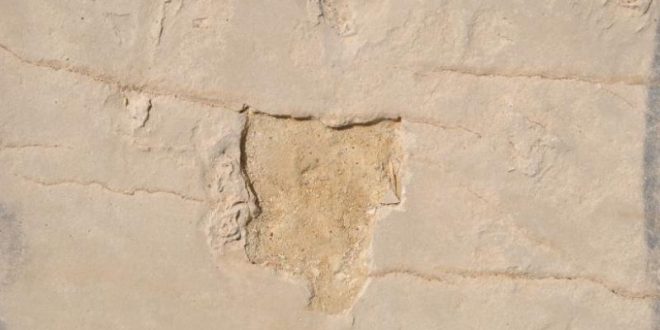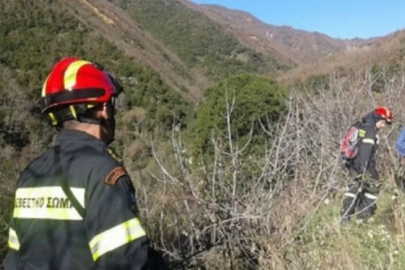A local high school teacher has been arrested for the theft of fossil footprints in Kasteli, Chania, on the island of Crete. A part of the stolen human-like footprints were found in the home of the 55-year-old who is a resident of Kissamos. Security cameras had recorded the thief when he was removing the 5.-7-million-year-old fossils last week.
Two of the eight stolen foot prints were found in his home in Kissamos during a police search Thursday afternoon. The remaining six were hidden in a farm Rysio, south of Thessaloniki, in northern Greece.
The thief was also in Thessaloniki and was located by local police on Friday morning. He revealed his ‘secret to police’ and showed them where he had hidden the remaining prehistoric footprints.
Media report that the man transported the stolen fossil footprints per airplane.
The owner of the farm has been also allegedly arrested, however, he seems to be just the ‘keeper’ of the stolen goods and not involved in the theft.
Charges for violating the law on the protection of antiquities and the cultural heritage have been raised against the high school teacher.
When the theft was accidentally discovered by a visitor of the site where the fossil footprints are located, the Natural History Museum in Herakleion filed a law suit at the local police station.
According to Cretan media Flashnews.gr, the high school teacher was the same ‘citizen’ who had found that the footprints were stolen!
The fossil footprints were discovered in Kasteli, in the prefecture of Chania, in Western Crete by a Polish paleontologist. The human-like footprints are approximately 5.7 million years old and are believed to challenge established theories of human evolution about who did the first walking step in the history of humankind.
The footprints were discovered in Kasteli by Chania on the island of Crete by paleontologist Gerard Gierlinski by chance when he was on holiday on Crete in 2002.
Gierlinski, a paleontologist at the Polish Geological Institute specialized in footprints, identified the footprints as mammal but did not interpret them further at the time. In 2010 he returned to the site together with his assistant Grzegorz Niedzwiedzki, a Polish paleontologist now at Uppsala University, to study the footprints in detail. Together they came to the conclusion that the footprints were made by hominins.


































